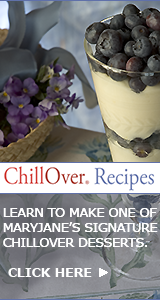Mary Murray
describes herself as a goat charmer, chicken whisperer, bee maven, and farmers’ market baker renovating an 1864 farmhouse on an Ohio farm. With a degree in Design, Mary says small-town auctions and country road barn sales "always make my heart skip a beat thinking about what I could create or design out of what I’ve seen.”
Rooted in the countryside, she likes simple things and old ways … gardening, preserving the harvest, cooking, baking, and all things home. While you might find her selling baked goods from the farm’s milkhouse, teaching herself to play the fiddle, or sprucing up a vintage camper named Maizy, you will always find her in an apron!
Mary says, “I’m happiest with the simple country pleasures … an old farmhouse, too many animals, a crackling fire, books to read, and the sound of laughter … these make life just perfect.”
Column contents © Mary Murray. All rights reserved.
Farmgirl
is a condition
of the heart.

Alexandra Wilson
is a budding rural farmgirl living in Palmer, the agricultural seat of Alaska. Alex is a graduate student at Alaska Pacific University pursuing an M.S. in Outdoor and Environmental Education. She lives and works on the university’s 700 acre environmental education center, Spring Creek Farm. When Alex has time outside of school, she loves to rock climb, repurpose found objects, cross-country ski on the hay fields, travel, practice yoga, and cook with new-fangled ingredients.
Alex grew up near the Twin Cities and went to college in Madison, Wisconsin—both places where perfectly painted barns and rolling green farmland are just a short drive away. After college, she taught at a rural middle school in South Korea where she biked past verdant rice paddies and old women selling home-grown produce from sidewalk stoops. She was introduced to MaryJanesFarm after returning, and found in it what she’d been searching for—a group of incredible women living their lives in ways that benefit their families, their communities, and the greater environment. What an amazing group of farmgirls to be a part of!
Column contents © Alexandra Wilson. All rights reserved.
Libbie Zenger
Previous Rural Farmgirl,
June 2010 – Jan 2012
Libbie’s a small town farmgirl who lives in the high-desert Sevier Valley of Central Utah on a 140-year-old farm with her husband and two darling little farmboys—as well as 30 ewes; 60 new little lambs; a handful of rams; a lovely milk cow, Evelynn; an old horse, Doc; two dogs; a bunch o’ chickens; and two kitties.
René Groom
Previous Rural Farmgirl,
April 2009 – May 2010
René lives in Washington state’s wine country. She grew up in the dry-land wheat fields of E. Washington, where learning to drive the family truck and tractors, and “snipe hunting,” were rites of passage. She has dirt under her nails and in her veins. In true farmgirl fashion, there is no place on Earth she would rather be than on the farm.
















Yum! I love baked goods like this. Sweet, but not too sweet, and pretty too. I miss the house filled with the smell of the fresh baked bread I made regularly. I had a mill and would do the whole process, from grinding grain to slicing and bagging. The family is all grown now, and baking for themselves. I’m glad to pass the tradition down.
Hi Cindi!
My daughter does that too… the entire process! It IS such a great thing when raising kids. I used to make bread all the time. And I’ve really gotten away from it.
~ Dori ~
This looks really yummy Dori I will have to try making it.
Hi Sheila!
You need to make it!!!! It’s the yummiest!
~ Dori ~